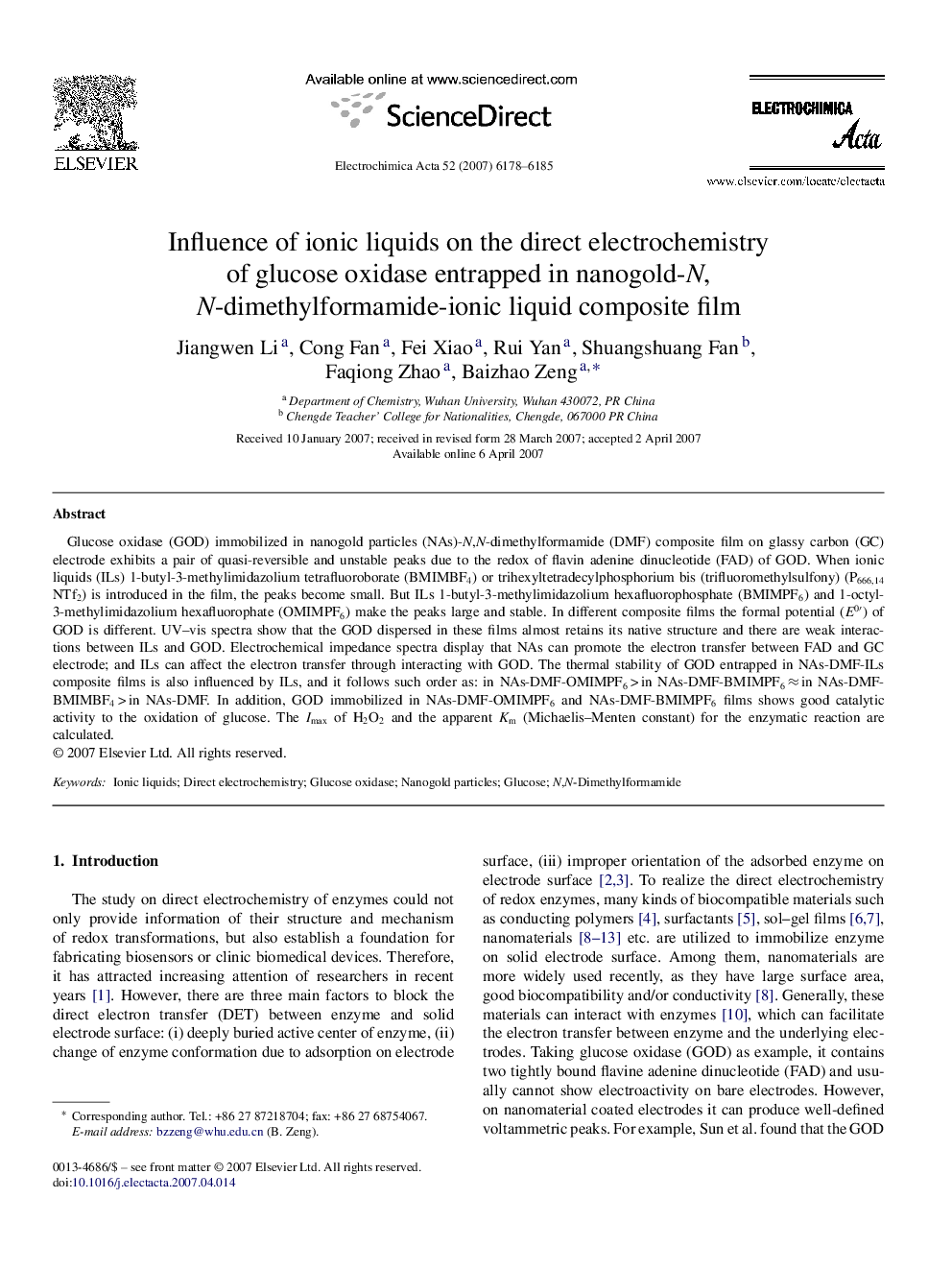| Article ID | Journal | Published Year | Pages | File Type |
|---|---|---|---|---|
| 192978 | Electrochimica Acta | 2007 | 8 Pages |
Glucose oxidase (GOD) immobilized in nanogold particles (NAs)-N,N-dimethylformamide (DMF) composite film on glassy carbon (GC) electrode exhibits a pair of quasi-reversible and unstable peaks due to the redox of flavin adenine dinucleotide (FAD) of GOD. When ionic liquids (ILs) 1-butyl-3-methylimidazolium tetrafluoroborate (BMIMBF4) or trihexyltetradecylphosphorium bis (trifluoromethylsulfony) (P666,14 NTf2) is introduced in the film, the peaks become small. But ILs 1-butyl-3-methylimidazolium hexafluorophosphate (BMIMPF6) and 1-octyl-3-methylimidazolium hexafluorophate (OMIMPF6) make the peaks large and stable. In different composite films the formal potential (E0′) of GOD is different. UV–vis spectra show that the GOD dispersed in these films almost retains its native structure and there are weak interactions between ILs and GOD. Electrochemical impedance spectra display that NAs can promote the electron transfer between FAD and GC electrode; and ILs can affect the electron transfer through interacting with GOD. The thermal stability of GOD entrapped in NAs-DMF-ILs composite films is also influenced by ILs, and it follows such order as: in NAs-DMF-OMIMPF6 > in NAs-DMF-BMIMPF6 ≈ in NAs-DMF-BMIMBF4 > in NAs-DMF. In addition, GOD immobilized in NAs-DMF-OMIMPF6 and NAs-DMF-BMIMPF6 films shows good catalytic activity to the oxidation of glucose. The Imax of H2O2 and the apparent Km (Michaelis–Menten constant) for the enzymatic reaction are calculated.
